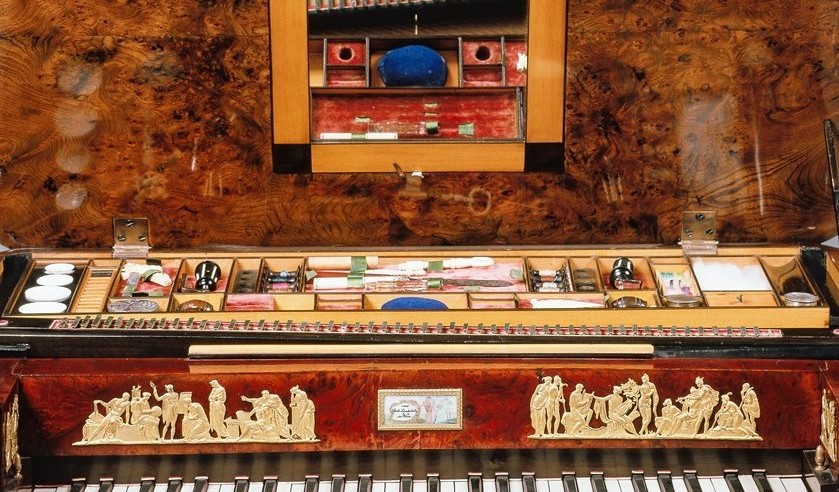Furniture with (hi)stories
Selected 3
May 23rd until August 31st 2025
Made by and for people, furniture is an integral part of our everyday lives. It is its use and ultimately the relationship to its owners that characterises it and determines its design. On closer inspection, furniture conveys just as much about people's lives as do pictures, for example. It often even becomes a medium for images, as some of the exhibits clearly demonstrate. Via the distribution of certain types of furniture, pictorial motifs or building materials we can also reconstruct international contexts. As furniture is mobile, it also testifies to intercultural exchange. Moreover, through trade, sales and the adaptation of contemporary fashions, complex local and global interconnections also become evident. When taking a closer look at deliberately chosen stylistic references or the appropriation of various pictorial themes we can discover fascinating furniture (hi)stories right up to the present day. Against this backdrop, the exhibition Furniture with (Hi)stories comprises seven themed rooms in which visitors can explore what the design and the form of the pieces tell us about the people and everyday life in their respective eras.
The exhibition is part of the Selected series, which makes objects from the currently closed historical collection of the MAKK accessible to the public.
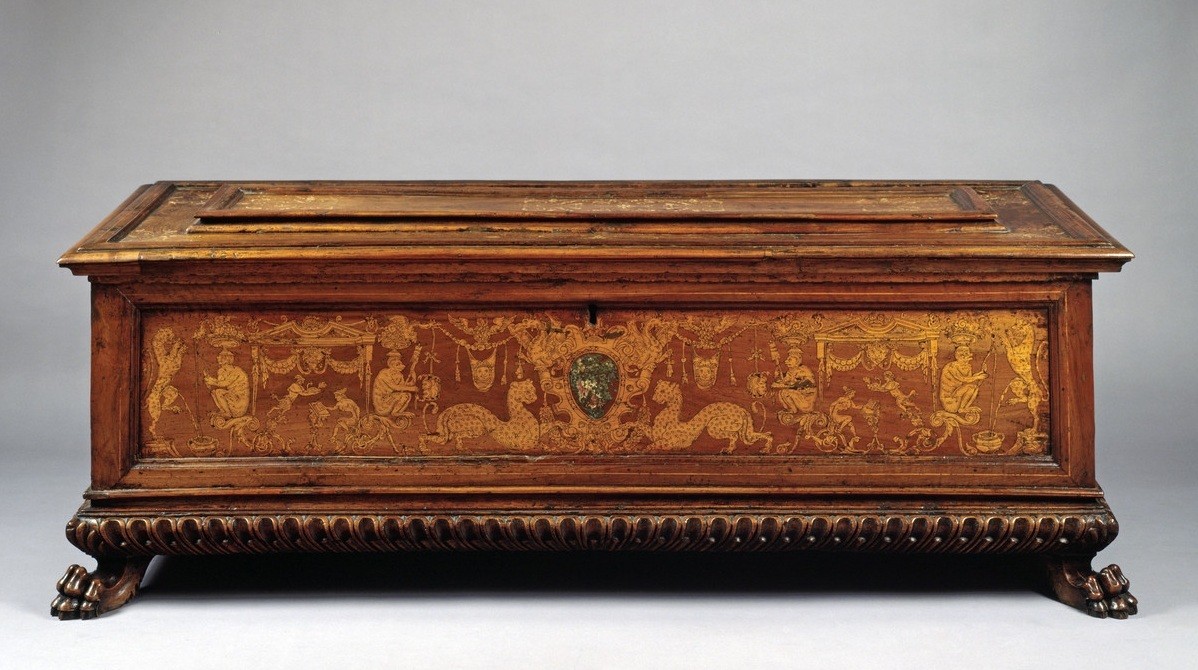
Mobile works of art
The German term Möbel derives from Latin mobilia, meaning moveable goods. The chest is considered one of the most significant and oldest pieces of furniture in the premodern home. Its design, form and size vary according to its many possible applications. As an ornate wedding chest, a prestigious gold chest or a grotesquely decorated luxury chest, the pieces of furniture shown here not least illustrate their character as mobile works of art.
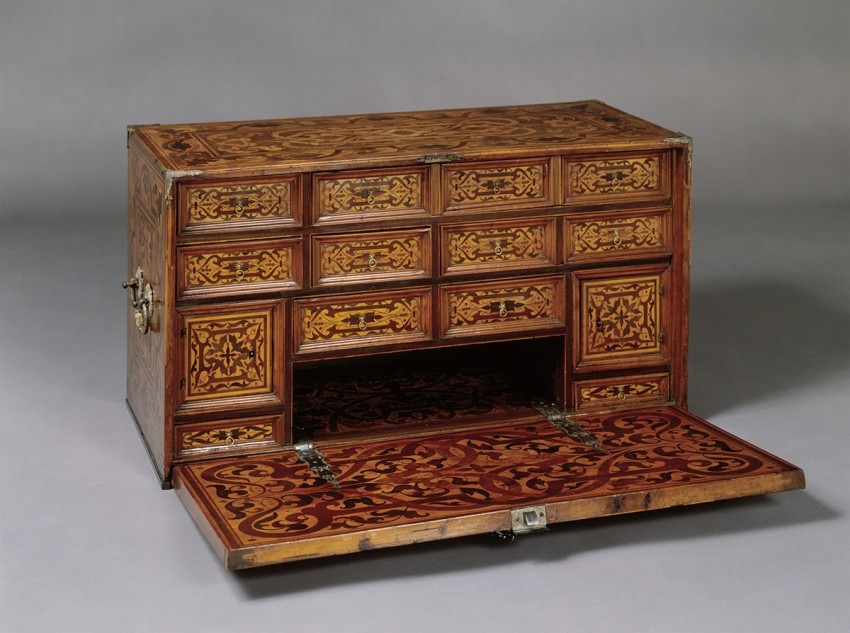
Storage Space Marvels
With the advance of the culture of writing in the late Middle Ages, more and more types of furniture were developed that could be used as portable writing boxes or for transporting written documents. Anyone who owned such a piece of furniture was considered educated and respected. The popularity of this furniture contributed to its increasing international spread. Towards the end of the 16th century, the production of writing furniture became particularly significant in southern Germany. Adaptations of the formerly functional writing furniture were produced there in the form of so-called show-cabinets, which were an integral part of regal chambers of curiosities and mainly served a display function.
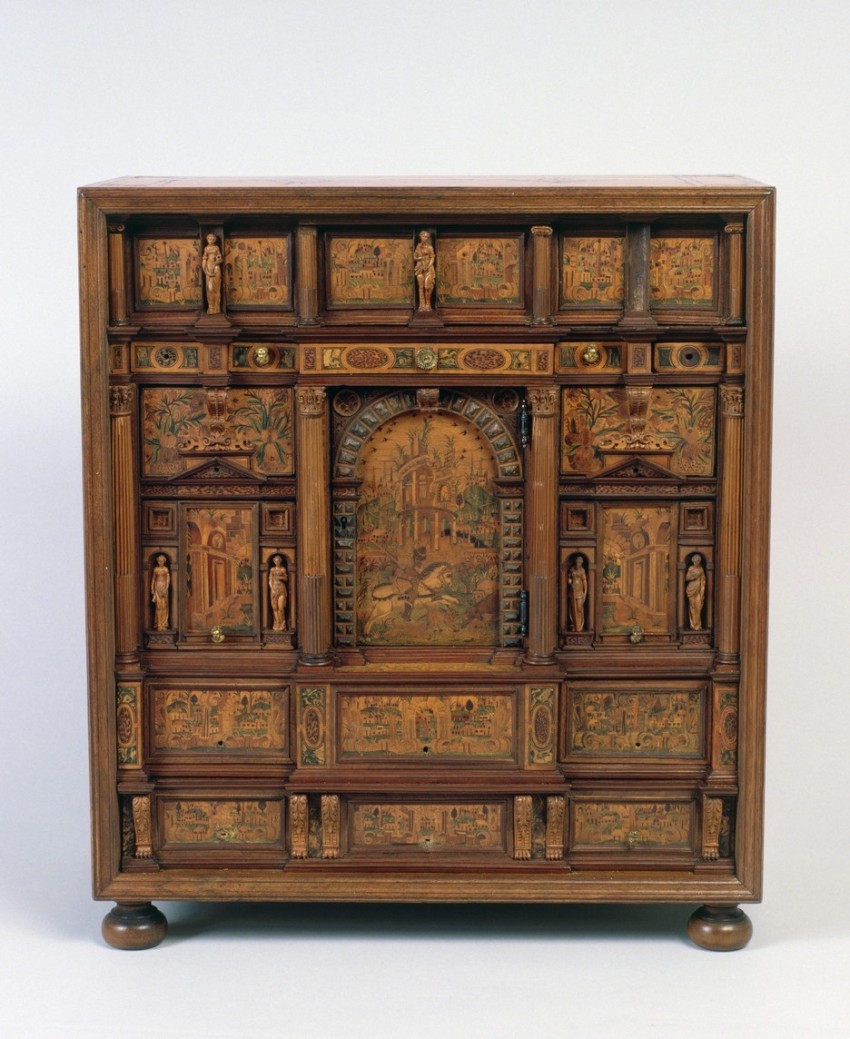
Motif and Model
Many pieces of furniture only reveal their (hi)-stories upon closer inspection. This room is designed to sharpen the eye for small details and focus on the dialogue between visual art and applied art. Motifs found on pieces of furniture are sometimes based on prints or inspired by contemporary representations in other visual media. The objects in this room convey stories of mutual inspiration that transcend the boundaries of a single visual medium. For example, in this room, the pictorial subject of virtues can be found on various objects, executed in different representational techniques.
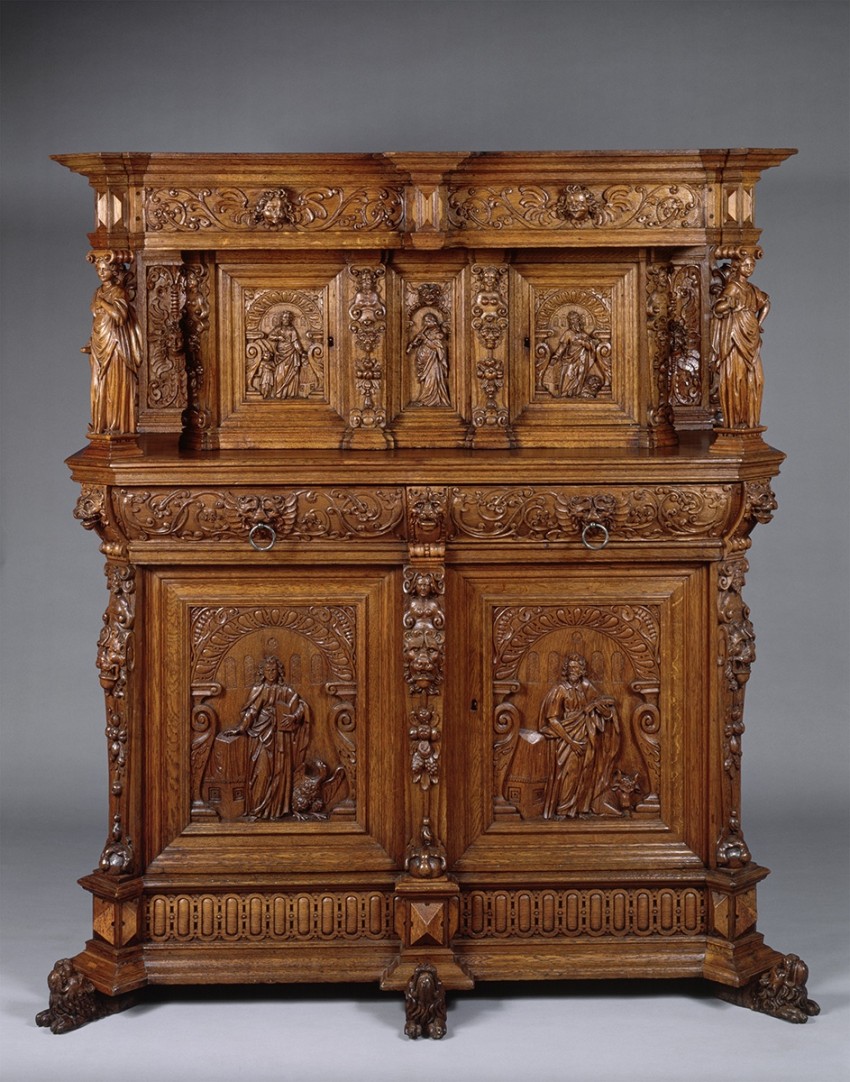
Local and Global
While the 17th century is generally regarded as a century of crises and wars, still some local and global differences can be determined. During the Thirty Years' War, the city of Cologne remained a place for negotiations and was characterised by bourgeois prosperity. Evidence of this can be seen, for example, in Cologne's prestigious and exquisitely designed two-part cabinets. The expansion of the worldwide trade network led in particular to a more global exchange of raw materials and valuable goods and at the same time also characterised the darker side of colonialism, such as slavery, oppression and exploitation. Global trade is also visible in furniture production, where non-European woods such as padouk or ebony were increasingly used for precious pieces.
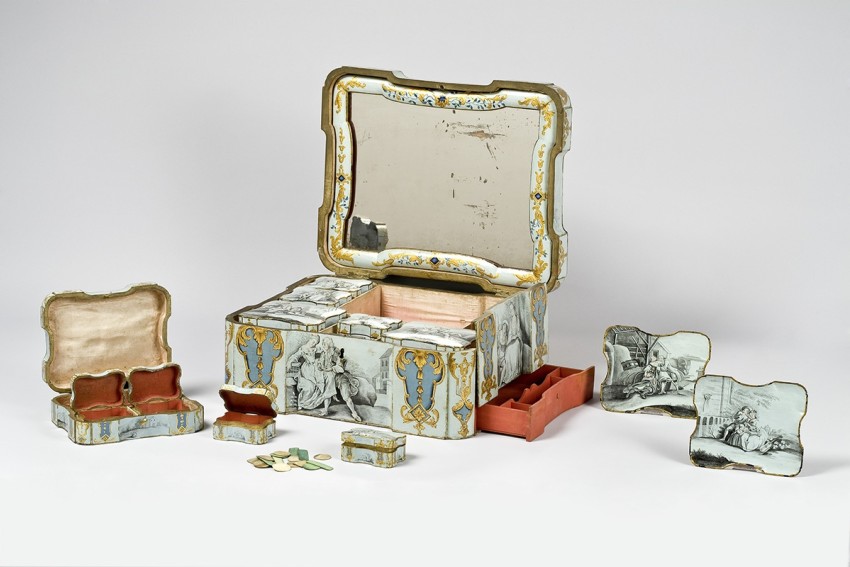
Lacquer and Desire
Lacquerwork arrived in Europe as early as the middle of the 16th century, for example from Japan. However, it was not until much later that the art of lacquerwork underwent a stylistic adaptation in European countries. It experienced a heyday in the 18th century. The objects shown here are characterised by various techniques, adaptations and material imitations. They also reflect typical contemporary pictorial themes, such as the Rococo preference for chinoiseries and gallant love scenes.
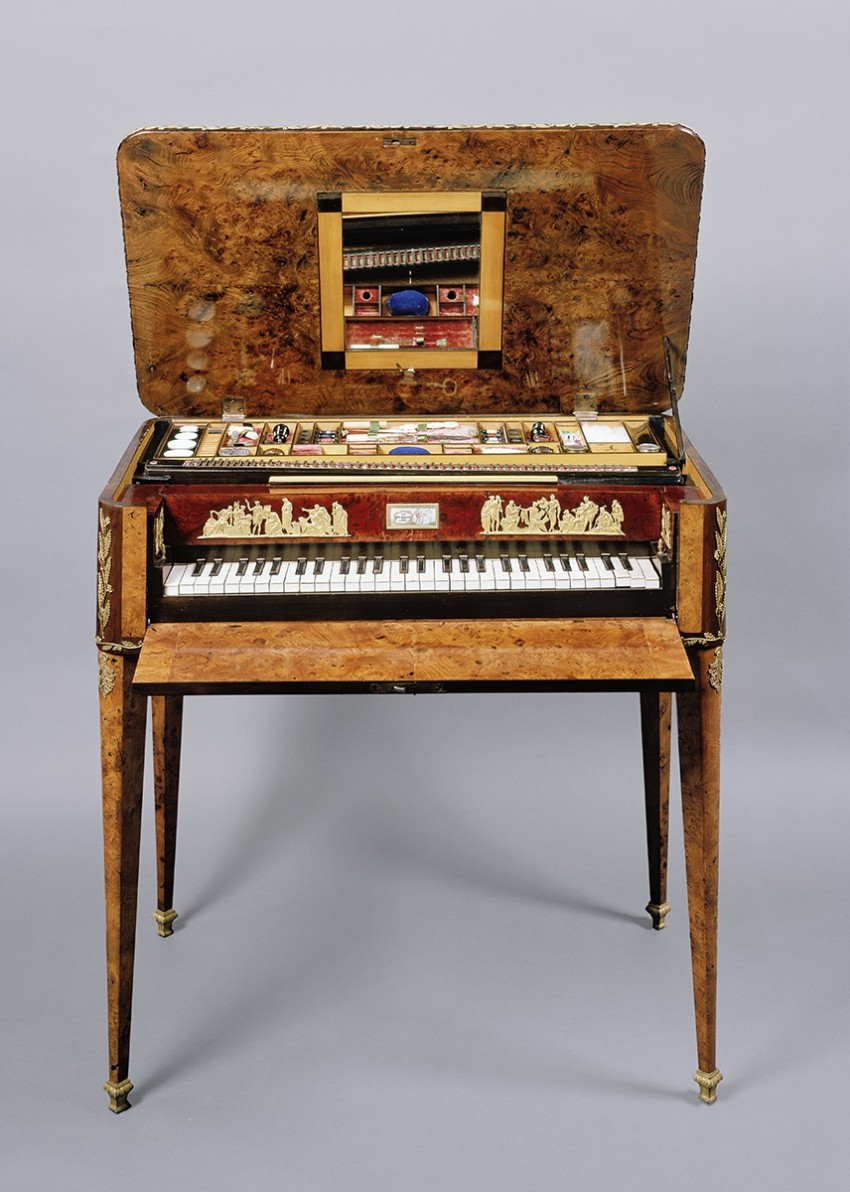
Music and Games
Two particular forms of furniture presented in this room bear witness to the fact that furniture was also made for certain social occasions. While the games table is an illustrative example of the passion for games in the 18th century, the so-called `needlework piano´ from the beginning of the 19th century is a symbol of Biedermeier domesticity. Both objects also provide insights into the respective contemporary image of women through their specific design and function.
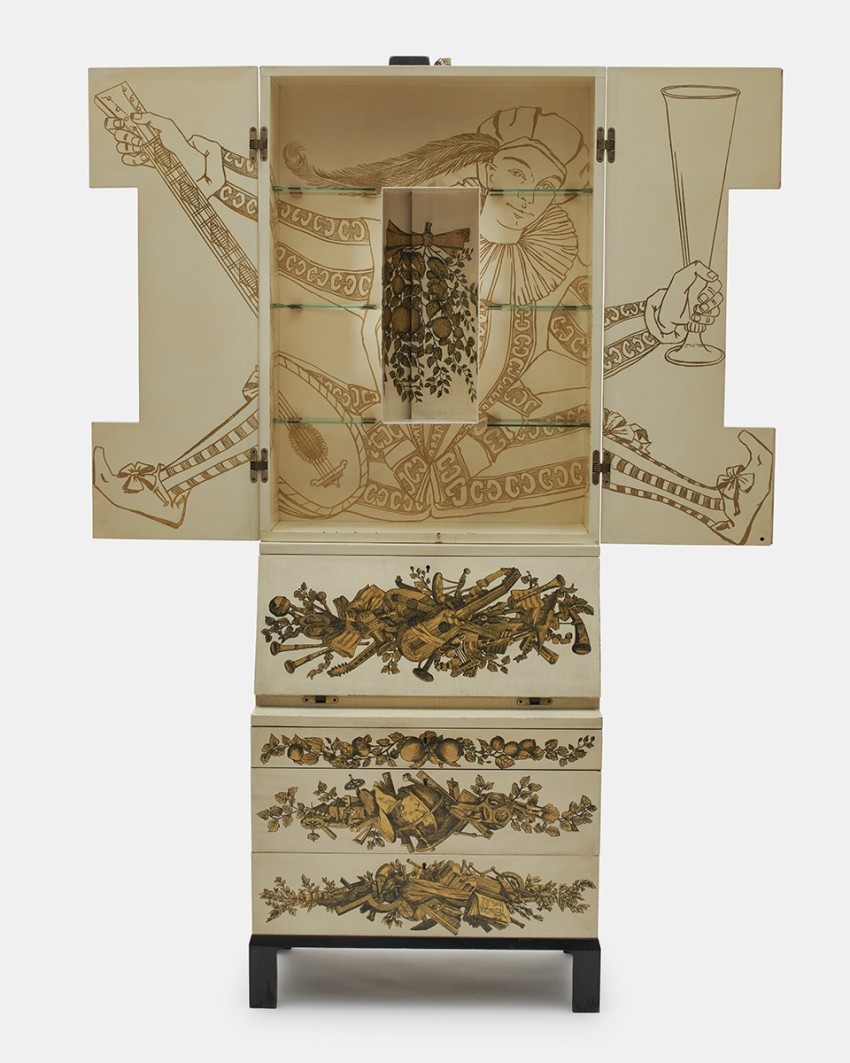
Back to the Future
The exhibition concludes with a retrospective view of historical role models and their creative reinterpretations. Upon reflection, the tour of the exhibition shows how past eras serve as a source of inspiration and are constantly being rethought, adapted and translated into new forms of design. The Panoplie bureau cabinet refers to past styles not only through its motif design, but also through the furniture type ‘trumò’ (derived from the French trumeau), which has been a recognised furniture form in Italy since the 18th century. This eye-catching piece is also a recent acquisition by the MAKK from 2019 and is being presented to the public for the first time in this exhibition.
